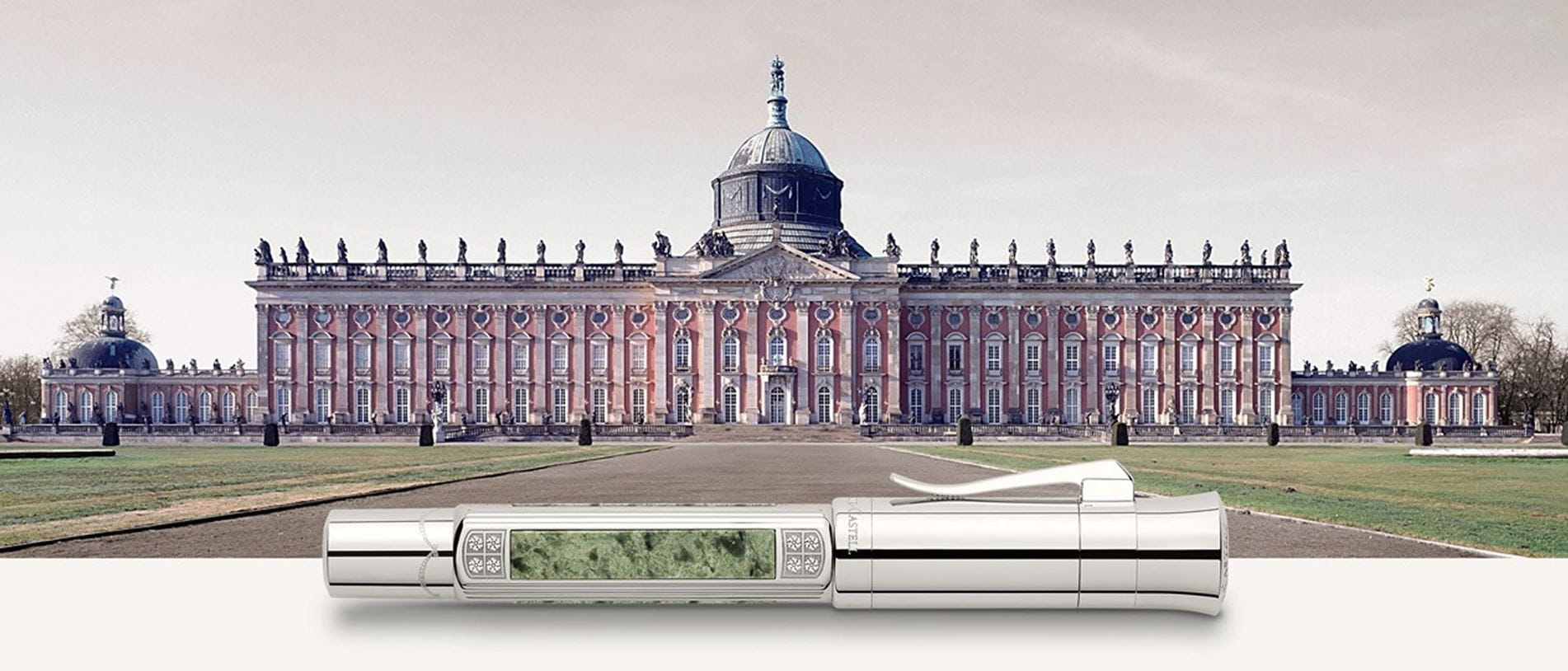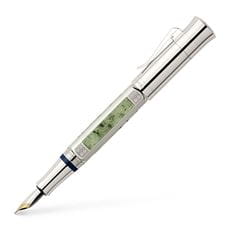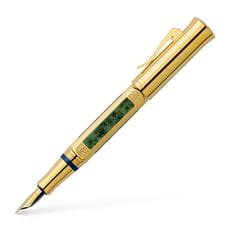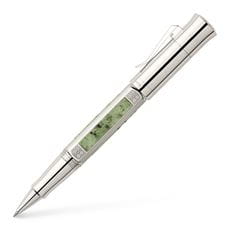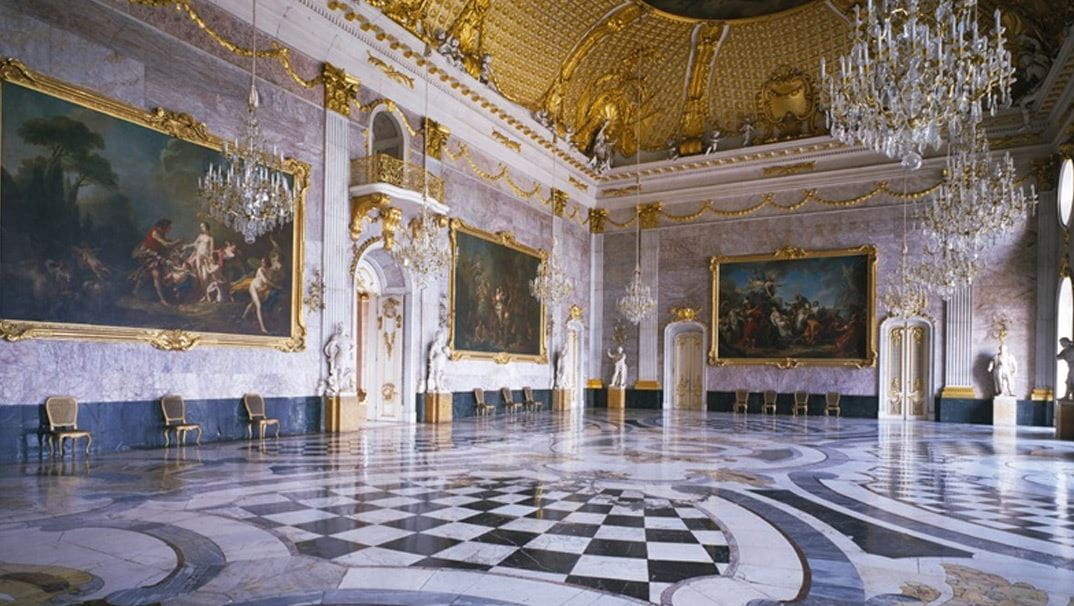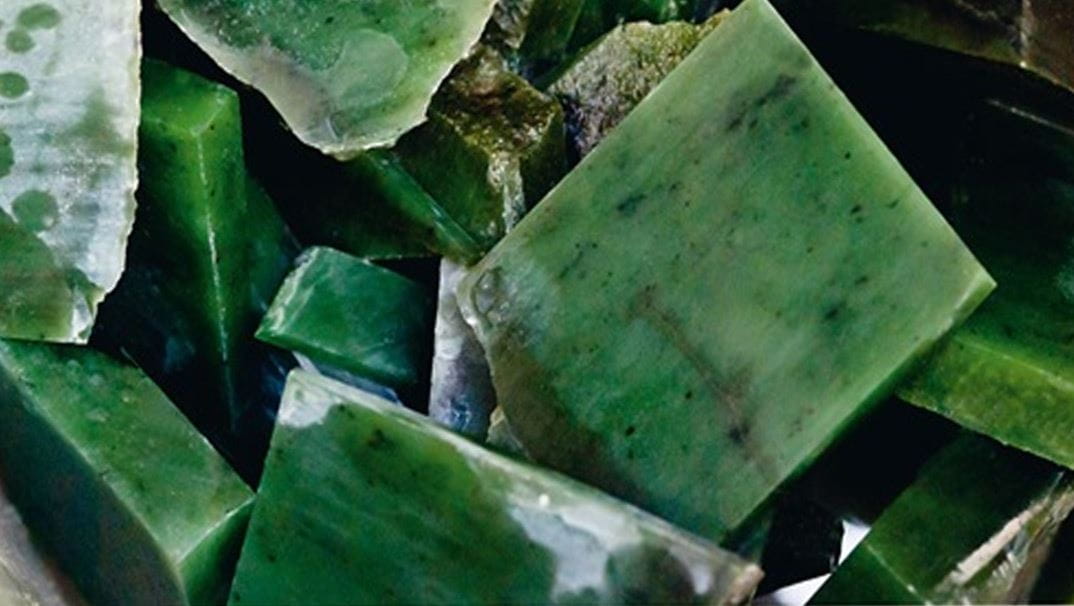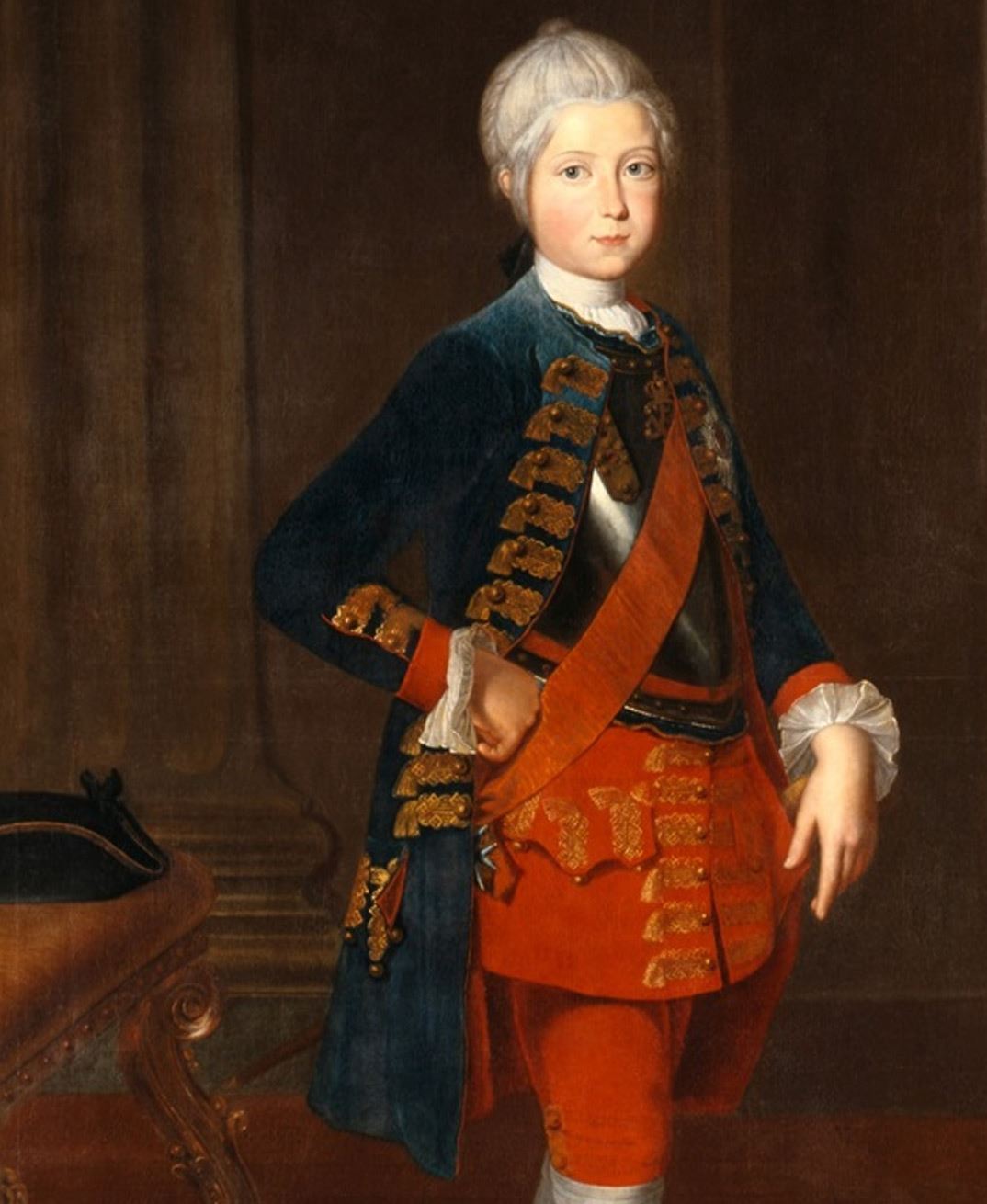
A crown Prince goes his own way
A royal drama took place in Prussia in 1730 that captivated the whole of Europe.
The young Crown Prince Frederick rebelled against his father, fled with a friend, was arrested and found himself facing execution. This sent a ripple through the royal houses of Europe. Emperor Charles VI and Prince Eugene personally interceded for the Crown Prince by letter and the drama took a happy turn: after the initial arrest, Frederick was completely vindicated. This paved the way for one of the most extraordinary ruling figures of this and every other period: philosopher, artist, musician, strategist, lawmaker, enlightened monarch – Frederick II, later called the Great (1712 - 1786), King of Prussia and Elector of Brandenburg, took to the European stage.
The young Crown Prince Frederick rebelled against his father, fled with a friend, was arrested and found himself facing execution. This sent a ripple through the royal houses of Europe. Emperor Charles VI and Prince Eugene personally interceded for the Crown Prince by letter and the drama took a happy turn: after the initial arrest, Frederick was completely vindicated. This paved the way for one of the most extraordinary ruling figures of this and every other period: philosopher, artist, musician, strategist, lawmaker, enlightened monarch – Frederick II, later called the Great (1712 - 1786), King of Prussia and Elector of Brandenburg, took to the European stage.
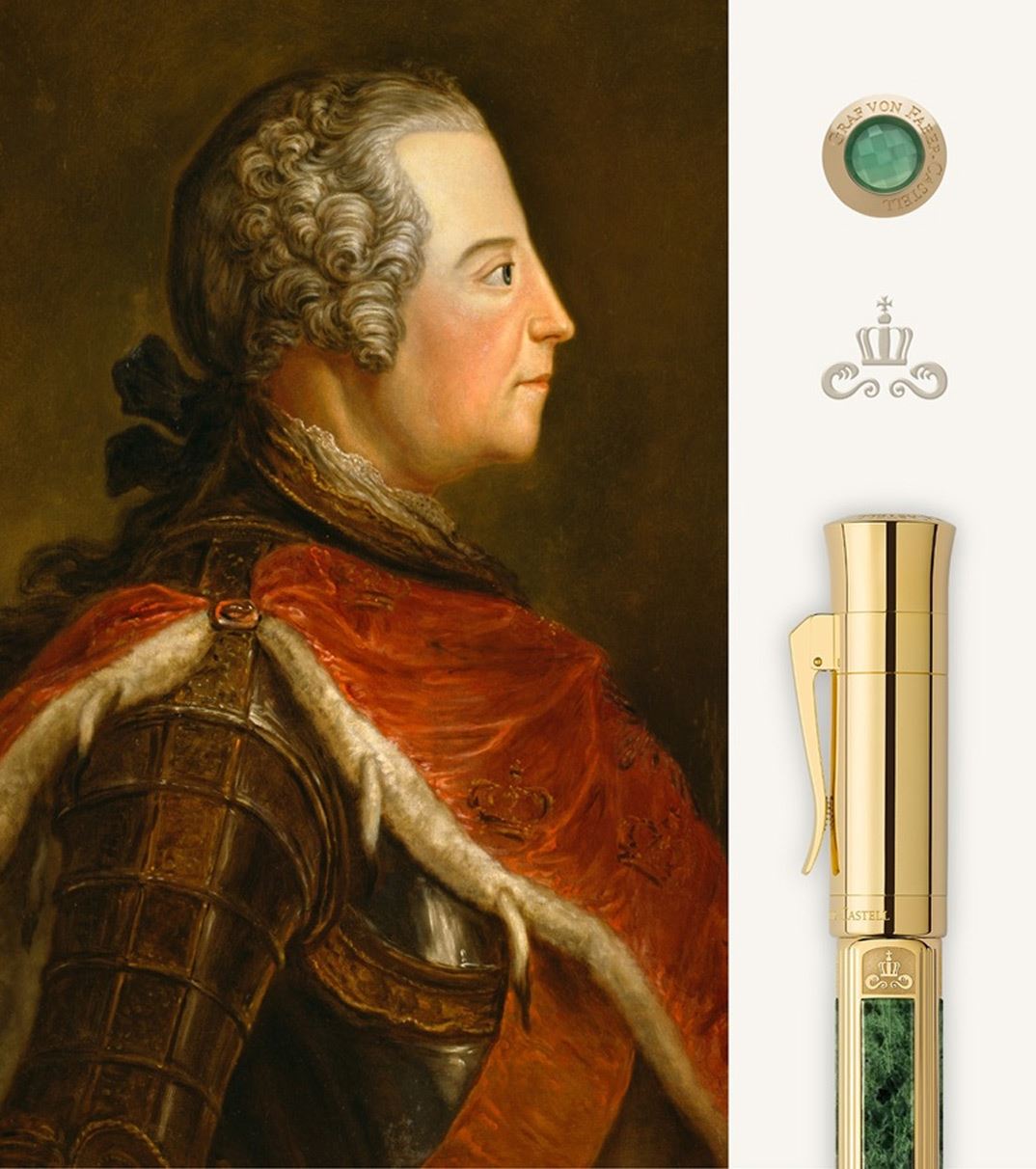
The many Talents of the "Roi Chartmant"
When he took office in 1740, the young king displayed a remarkable open-mindedness that resurfaced time and again during his reign.
Inside this ruler coolly pursuing his interests was a fine mind with astonishing talents. Frederick devoted himself to the study of philosophy, history and poetry. He designed his private apartments to suit his own taste, right down to the last detail, sketched floor plans for Sanssouci and founded Frederician Rococo.
He regularly exchanged letters with Catherine the Great and dedicated several poems to her. His intensive correspondence with the great French Enlightenment philosopher Voltaire, deemed by historians as an “epochmaking dialogue”, has survived the centuries.
Inside this ruler coolly pursuing his interests was a fine mind with astonishing talents. Frederick devoted himself to the study of philosophy, history and poetry. He designed his private apartments to suit his own taste, right down to the last detail, sketched floor plans for Sanssouci and founded Frederician Rococo.
He regularly exchanged letters with Catherine the Great and dedicated several poems to her. His intensive correspondence with the great French Enlightenment philosopher Voltaire, deemed by historians as an “epochmaking dialogue”, has survived the centuries.
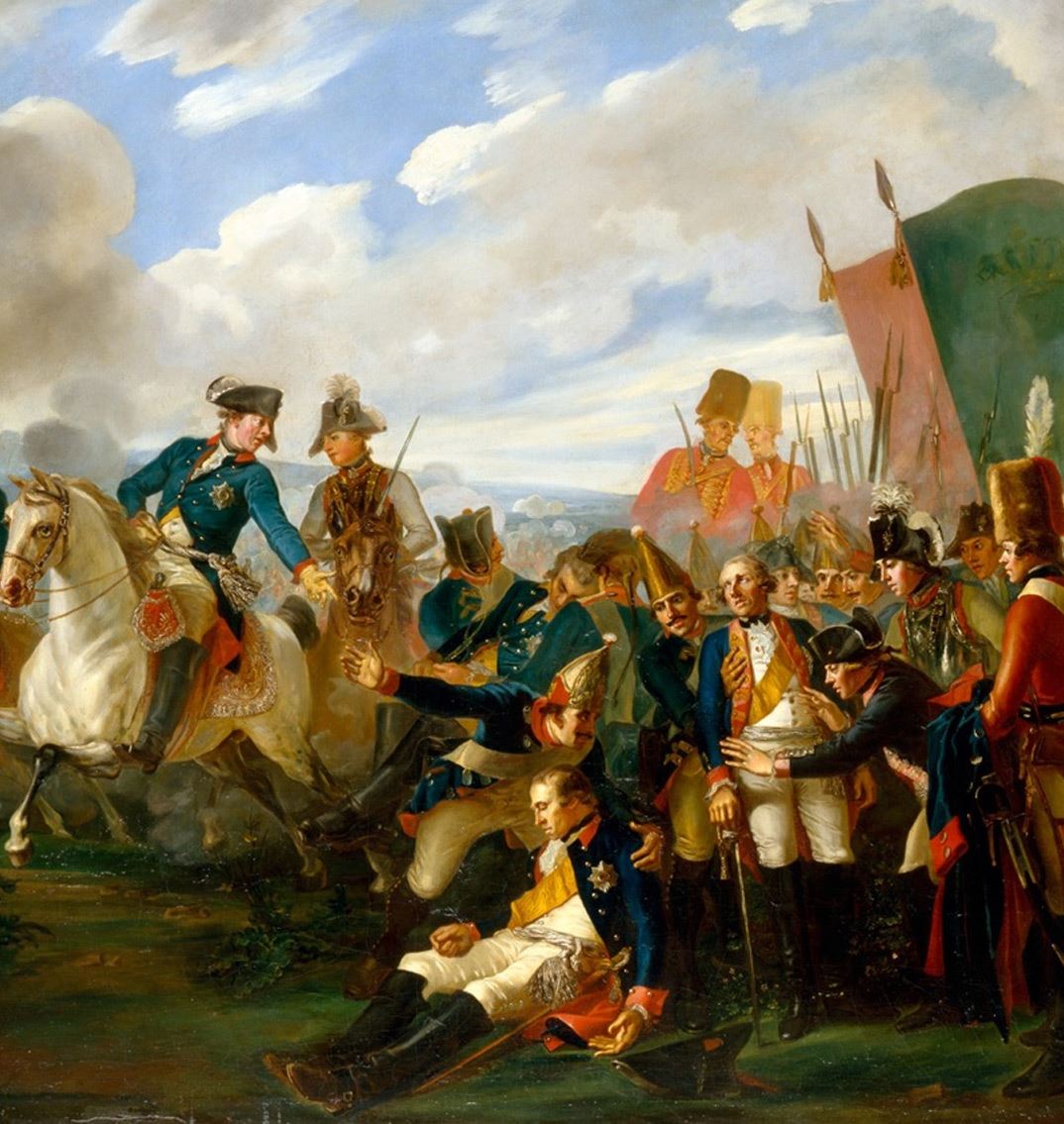
The Strategies of a great Monarch
Frederick II showed extraordinary strategical skills in the eventful ups and downs of European power politics.
Under his rule, Prussia acceded to the circle of the major powers. He also incorporated his enlightened ideas into his politics. He described himself as the “first servant of the State” and caused a sensation in Europe as a young monarch when he abolished torture.
Tolerance and openness were the main tenets of his attitude: “Everyone should be free to pursue their own happiness,” was his motto. He also demonstrated remarkable foresight in foreign policy: he concluded a treaty of amity and commerce with the distant United States, signed by the American founding fathers Benjamin Franklin and Thomas Jefferson.
Under his rule, Prussia acceded to the circle of the major powers. He also incorporated his enlightened ideas into his politics. He described himself as the “first servant of the State” and caused a sensation in Europe as a young monarch when he abolished torture.
Tolerance and openness were the main tenets of his attitude: “Everyone should be free to pursue their own happiness,” was his motto. He also demonstrated remarkable foresight in foreign policy: he concluded a treaty of amity and commerce with the distant United States, signed by the American founding fathers Benjamin Franklin and Thomas Jefferson.
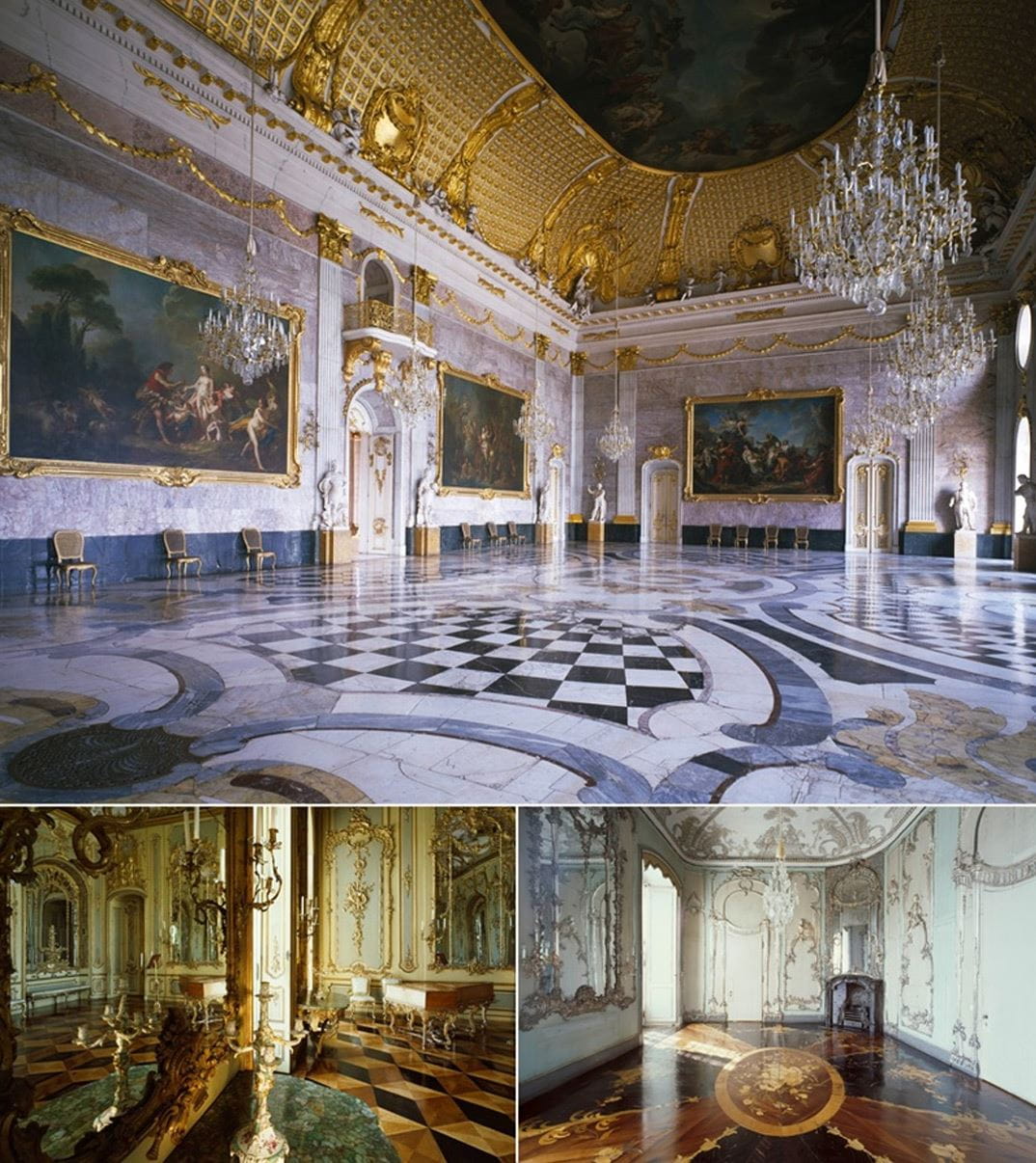
At the Peak of Fame
After the Seven Years’ War and victory over the powerful Habsburg monarchy, large and influential Silesia became part of Prussia.
Frederick was hailed as a military genius and henceforth called “the Great”. As a sign of his victory he ordered the construction of his largest and most ambitious building: the New Palace of Sanssouci.
Magnificent ballrooms, impressive Galleries – everything to ensure that guests from the German and European aristocracy could celebrate in style. Precious decorative natural stones played a special role in this splendour, something Prussia had in abundance thanks to the conquest of Silesia: wall coverings made from multi-coloured marble, floors inlaid with jasper, amethyst and serpentine – the interiors of the New Palace are unparalleled in Europe!
Frederick was hailed as a military genius and henceforth called “the Great”. As a sign of his victory he ordered the construction of his largest and most ambitious building: the New Palace of Sanssouci.
Magnificent ballrooms, impressive Galleries – everything to ensure that guests from the German and European aristocracy could celebrate in style. Precious decorative natural stones played a special role in this splendour, something Prussia had in abundance thanks to the conquest of Silesia: wall coverings made from multi-coloured marble, floors inlaid with jasper, amethyst and serpentine – the interiors of the New Palace are unparalleled in Europe!
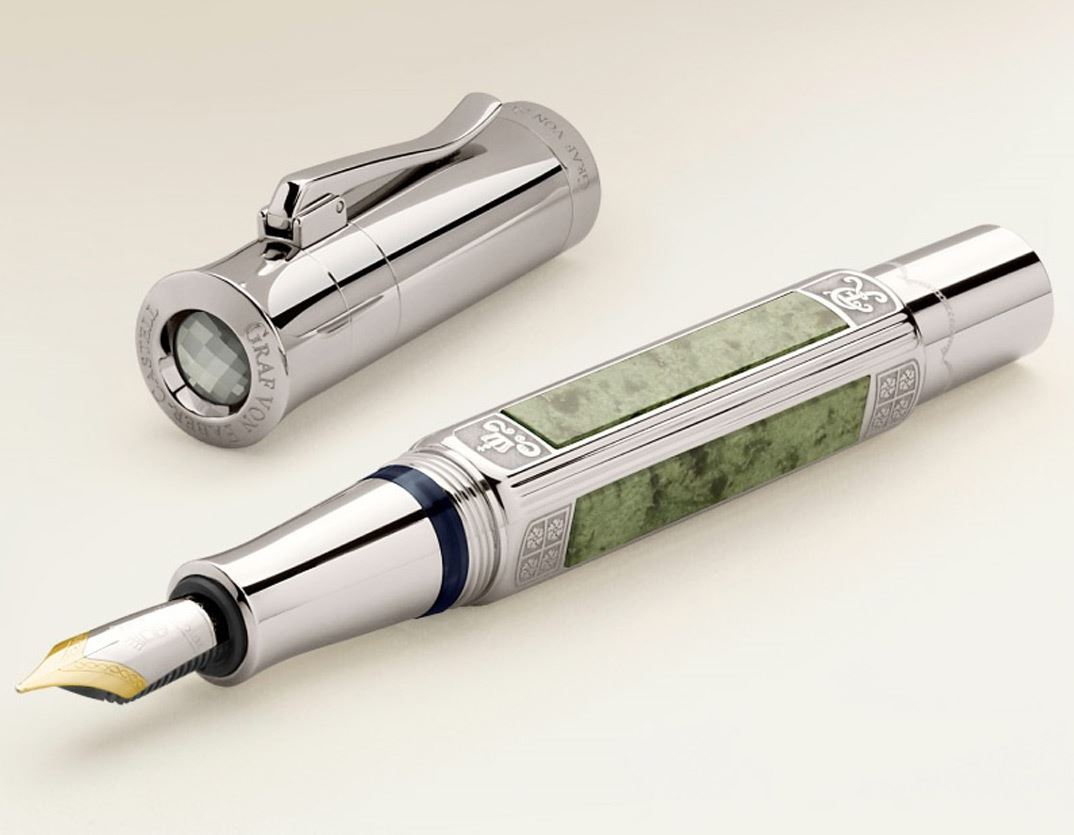
The Apotheosis of natural Stone
Frederick the Great, as king and connoisseur of decorative natural stones, cultivated a personal and simultaneously regal interest in the rich Silesian deposits then used to do justice to Prussia’s new status.
By special sovereign right, the monarch reserved all precious stones and chrysoprase in particular for himself: these stones with their emerald to apple green colouration are considered the most valuable variety of quartz. Frederick the Great himself travelled to Silesia to choose the most beautiful. The New Palace was the culmination of the royal interest.
This magnificent building is home to a greater variety of natural stones than any other Frederician palace. Its fascinating architecture was the inspiration for the creation of the “Sanssouci, Potsdam” Pen of the Year.
By special sovereign right, the monarch reserved all precious stones and chrysoprase in particular for himself: these stones with their emerald to apple green colouration are considered the most valuable variety of quartz. Frederick the Great himself travelled to Silesia to choose the most beautiful. The New Palace was the culmination of the royal interest.
This magnificent building is home to a greater variety of natural stones than any other Frederician palace. Its fascinating architecture was the inspiration for the creation of the “Sanssouci, Potsdam” Pen of the Year.

Created by the Hand of a skilled Master
The creation of the “Sanssouci, Potsdam” Pen of the Year demands the highest standards of craftsmanship.
The Herbert Stephan gemstone manufactory was singularly predestined for this task. It carries on the great tradition of the Idar Oberstein gemstone workshops, which dates back to the 15th century and is still of world renown. The masters have demonstrated their incomparable skills with impressive results: the platinumplated barrel and cap are adorned by four green Silesian serpentines and a Russian smoky quartz – both ground and polished by hand. The Special Edition combines 24-carat gold plating with green serpentine and rare chrysoprase, Frederick’s favourite natural stone. Chrysoprase has not been mined for many years and is only available on the antique stone market.
The Herbert Stephan gemstone manufactory was singularly predestined for this task. It carries on the great tradition of the Idar Oberstein gemstone workshops, which dates back to the 15th century and is still of world renown. The masters have demonstrated their incomparable skills with impressive results: the platinumplated barrel and cap are adorned by four green Silesian serpentines and a Russian smoky quartz – both ground and polished by hand. The Special Edition combines 24-carat gold plating with green serpentine and rare chrysoprase, Frederick’s favourite natural stone. Chrysoprase has not been mined for many years and is only available on the antique stone market.
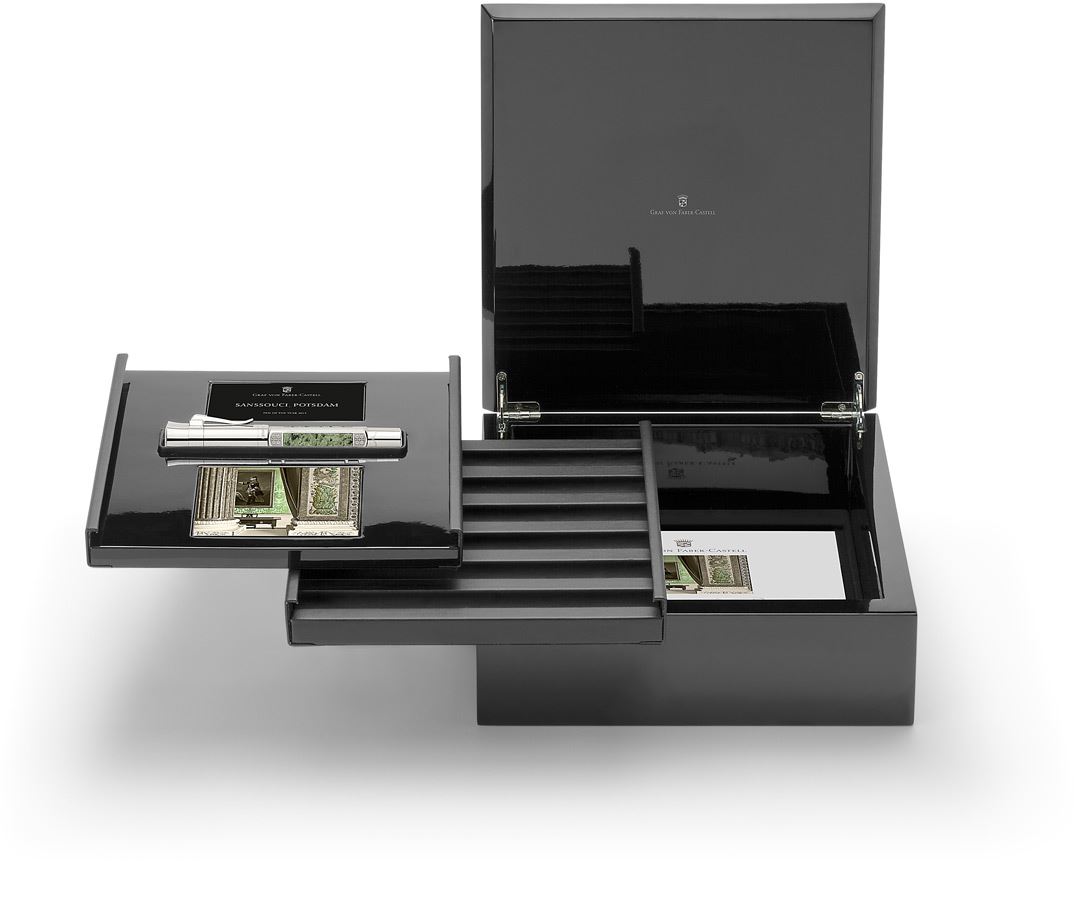
High Quality Presentation
Each writing instrument is individually numbered and comes in a highly polished, deep-black wooden case. It includes a certificate personally signed by the master craftsman of the Herbert Stephan gemstone manufactory attesting to the authenticity of the natural stones.
The wooden case can also be used as a collector’s case because a second insert has room for an additional six writing instruments.
The wooden case can also be used as a collector’s case because a second insert has room for an additional six writing instruments.
